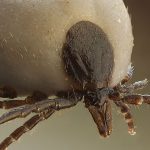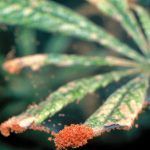Mulch Mosquito in Marijuana. Prevention and Treatment
Marijuana gnats, also known as mulch gnats or substrate flies, are a common problem for soil-based marijuana growers, but if you know how to act, they are easy to get rid of. The mulch gnats are very small, just 2 millimetres long, and are grey, black or brown in colour with long legs.
Female fungus gnats lay two hundred eggs per week, and often lay them towards the bottom of your marijuana plants. Fungus gnat maggots have black heads and translucent bodies, and both larvae and adults have a taste for marijuana plants.
In this article we will show you how to prevent the appearance of fungus gnats, how to combat them once they have arrived in your Cannabis garden and how to make sure they never appear again. Read on to find out all about it :)

What are the Mulch Gnats?
Mulch gnats belong to the family Sciaridae, where they are found in the subfamily Mycetophilidae. There are about 8,000 different species within the mulch gnats, although only a few of these actually attack plants. Bradysia, for example, which in the larval stage attacks the root system, or Scatella stagnalis, which is a risk for harmful fungal infections.
The name fungus gnats or fungus gnats comes from the fact that they feed on the fungi present in the substrate. When they have no more soil, they start biting the roots of the plants. In this way, they consume the small root tips, damaging the larger roots.
The biggest problem is that this affects the growth rate of the plants, causes chlorosis of the leaves and causes stems and branches to grow abnormally. Another major problem caused by the leaf midge is that it makes your plants much more vulnerable to fungal diseases.
The droppings of mulch gnats are one of the things that wreak the most havoc on your cannabis plants. The droppings, which they deposit on the soil, affect the drainage of the crop and therefore create excess moisture. This, in turn, attracts more pests that like a moist environment.
Add to this overwatering and you have a fatal combination of excess moisture and pests that will definitely affect the crop. Prevent this by stopping overwatering and following our tips on how to combat overwatering problems in marijuana.
Why Does the Mulch Gnat Show Up?
Moist soil and decaying organic matter is what marijuana gnats like best. This means that overwatering plants or allowing dead plant matter to rot on the surface of the crop will cause the fungus to grow. This is impossible to see with the naked eye and is what will invite mulch gnats to feast and lay tiny eggs that will lead to big nuisances. A well made mulch should never have this problem.
If you receive marijuana clones from another grower, you want to be absolutely sure that they are free of fungus gnats, especially if you have paid for them, as you will be bringing the bug home with you. However, with caution and good growing habits, it shouldn’t be too much of a problem.
If you are worried about insects like the substrate gnat being a problem, it is probably best to grow cannabis plants from seed, which gives you full security and assurance that they do not come with pests. Clones are the easiest way to spread pests to new crops, especially when grown indoors.
Symptoms of the Leaf Midge in Marijuana
In order for you to be able to identify the presence of the mulch midge when it has already affected your plants, here are the most common symptoms they usually present. In addition, as we will see later, we will show you how to treat your plants to completely eliminate this pest so that it does not reappear.
1. Leaf colour:
– Brown or burnt edges.
– Pale colour
– Chlorosis
– Black or grey spots

2. Leaf symptoms:
– Upper leaves affected
– Young leaf growth affected
– Small inner leaves affected
– All leaves may appear to be affected
– Leaf edges are burnt
– Yellow colour between veins
– Slow growth
– Twisted and abnormal growth
– Leaves curl downwards
– Leaves wither and fall
3. Plant symptoms:
– General slow growth
– Twisted and abnormal growth
– Slow root growth
– Sprouts do not put on weight
How to Get Rid of Gnats in the Mulch
Even if you have seen gnats flying around your plants and the infection has not had any visible effect on the plant yet, it is important to treat the problem as soon as you notice too many gnats in your crop. Especially if you see them concentrated on the surface of the substrate.
1. Adult Mosquito
One way to get rid of adult midges is to place sticky traps throughout the crop. Mosquito larvae, on the other hand, are the biggest problem for the crop.
2. Mosquito larvae
Diatomaceous earth and especially Nemazal are said to be very good at combating the fungus gnat infestation. This will kill the fungus gnat larvae, prevent future infestations from reoccurring and speed up the eradication process. Best of all, both solutions are organic.
How do they work? Very simply: kill the insects effectively by cutting off their exoskeletons and draining their body fluids. Luckily for us growers, they are not dangerous to people or pets, not even ingested, although their scent will stop you from doing so.
One way to destroy soil-dwelling larvae is to use a pest treatment like Snake Poison, a concentrated organic acid product that affects midge larvae in the substrate. It also strengthens the plant. In short, a product tailor-made for pest larvae.
The good thing about this insecticide is that, although it wreaks havoc on the tiny larvae, it will not cause any problems for the plants or their roots. Nor does it pose a threat to your own health. It is highly selective in where it focuses its damage, and focuses exclusively on larvae.

3. Mycorrhizae
First of all, make sure you dry out the top layers of soil in your crop, around 3 fingers. To do this, you will have to pause your normal watering schedule for a couple of days, but it is worth it. When the soil has dried out, make a mixture of 1 gram mycorrhiza per litre of irrigation water.
This will not harm your plants and will bring protection against fungus and large doses of oxygen which, as you know, is extremely beneficial for the soil. This will keep mosquitoes away and at the same time help your plants to grow healthy.
4. Ventilación
Para ayudar a acelerar el proceso de eliminación del mosquito del mantillo de la marihuana, utiliza un ventilador y dirígelo hacia el suelo para ayudar a secarlo más rápidamente. También ayuda a evitar que los diminutos mosquitos del mantillo vuelen a sus anchas, reduciendo la cantidad de huevos que pueden poner.
5. Watering Habits
Once you have eradicated mulch gnats from your crop, be sure to change your watering habits. If they have appeared, you have probably overwatered, so make sure you avoid this in the future so that you don’t have to deal with another mulch gnat infestation, or worse, such as thrips or spider mites.
You can keep using the sticky traps to find out what the current status of your mulch midge infestation is. If it has decreased, there will be fewer mosquitoes trapped in the trap, and vice versa. Don’t slow down on treatments until you have irrefutable proof that the substrate fly infestation is gone.
This could take anywhere from a couple of days to a few weeks! Don’t lose hope, and stay tuned.
Compost and Fungus Gnats
It’s not uncommon to discover fungus gnats and their larvae in your compost pile. You need to pay special attention, as compost is supposed to make your plants strong and hardy, not destroy them at the root. So, firstly, learn how to make the best homemade compost with this guide and now, how do you deal with the mulch gnats in your compost?
First, you need to make sure that your compost pile is not excessively wet – excess moisture is the main reason for gnats in your compost pile, so take this advice to heart. A good rule of thumb to avoid over-wetting is that compost piles should not be completely soaked, but should have a moisture content similar to that of a sponge that has been wrung out.
If you discover those pesky larvae in your compost pile, you should try sprinkling Neem on the exposed parts. This will not cause any damage to the plants, but will kill the larvae and adult mosquitoes present in the compost.
If the problem is particularly extreme, try an insecticidal pest treatment. Use a dry insecticide formulation rather than liquid if possible. Then add water which will activate the treatment and kill the larvae.
Cover the Pile
Once you have allowed your compost pile to dry out sufficiently, be sure to cover it with some sort of plastic cover or tarp. This will ruin the mulch midge’s life cycle, weakening it further and slowing down the pest. Another way to achieve the same is to cover it with a material that contains a lot of carbon. Examples of this are cardboard or shredded paper. If you already cover your compost pile with this material from the start, you also ensure that the substrate midge does not appear.
To prevent the appearance of the compost midge in your compost, do not put all your kitchen scraps in the compost pile if you are going to use it for your cannabis plants. The best marijuana growth comes from compost that has been properly maintained. This means using a proper compost or tea recipe.
Be sure to stir your compost pile frequently and consistently. This will also prevent mosquito larvae from becoming too much of a problem, in case they have already found their way into your delicious compost pile. If the compost is properly maintained, it will significantly increase in temperature, thanks to fermentation. This will eventually roast the remaining larvae, making them disappear.

Mulch Midge Vs Whitefly
The mulch midge is commonly confused with the whitefly, so make sure you know which one is hanging around your marijuana plants. The two have very different behaviours and therefore different deterrents, so it is important to know which one you are dealing with.
Whiteflies have milky-coloured bodies, while the midges are grey, dark brown or black. The mulch gnats will look particularly small to you, while the whiteflies are slightly larger and easier to spot. Also, remember that not all insects are bad, there are also many beneficial insects for growing cannabis.
If your problem is due to whiteflies rather than fungus gnats, you will need to take a different approach to eliminate them from your growing area. Remember that plants with strong genetics have less chance of getting sick and are less vulnerable to pests and diseases. So make sure you buy cannabis seeds from a reputable seed bank and check out these home made methods against Cannabis pests.
This has been all our content on mulch midge, substrate fly or fungus gnat, we hope you liked it and found it useful. Thank you for reading. Please leave your comments or questions in the section below and we will try to get back to you as soon as possible. If you liked this article, why not read about the other marijuana pests.
Founder of Experiencia Natural, creative and entrepreneur, designer, master in grower and marketing. For a normalization of all plants and substances, giving priority to patients and users.














